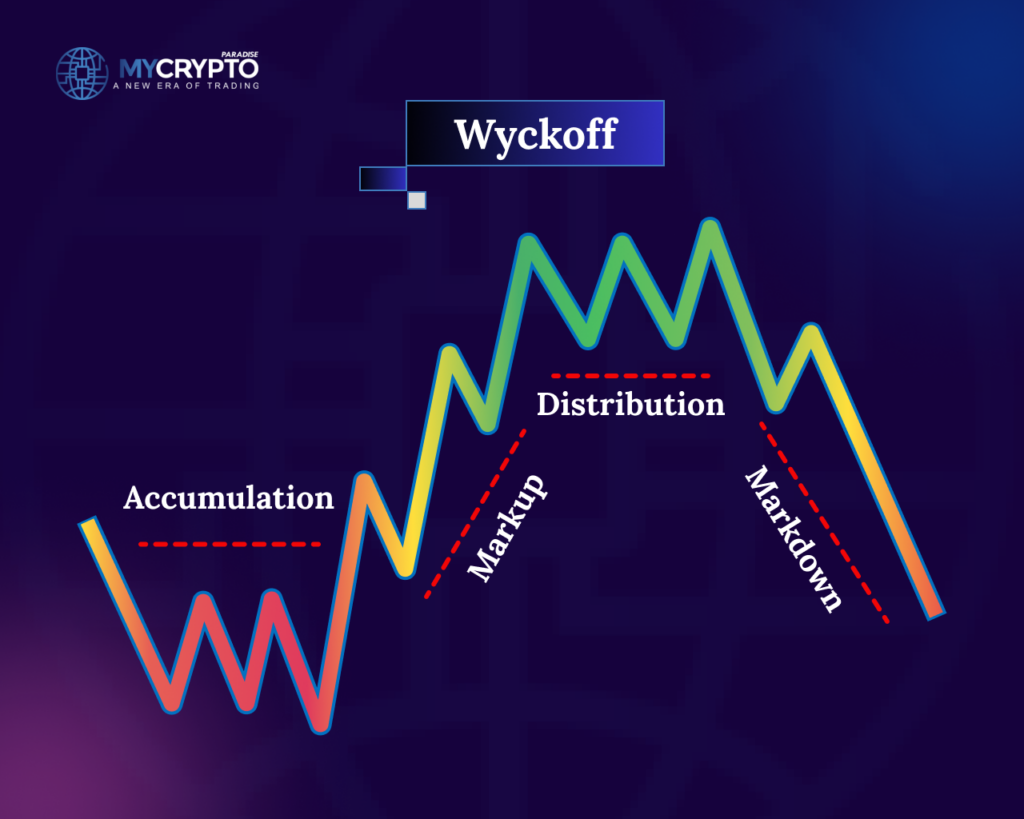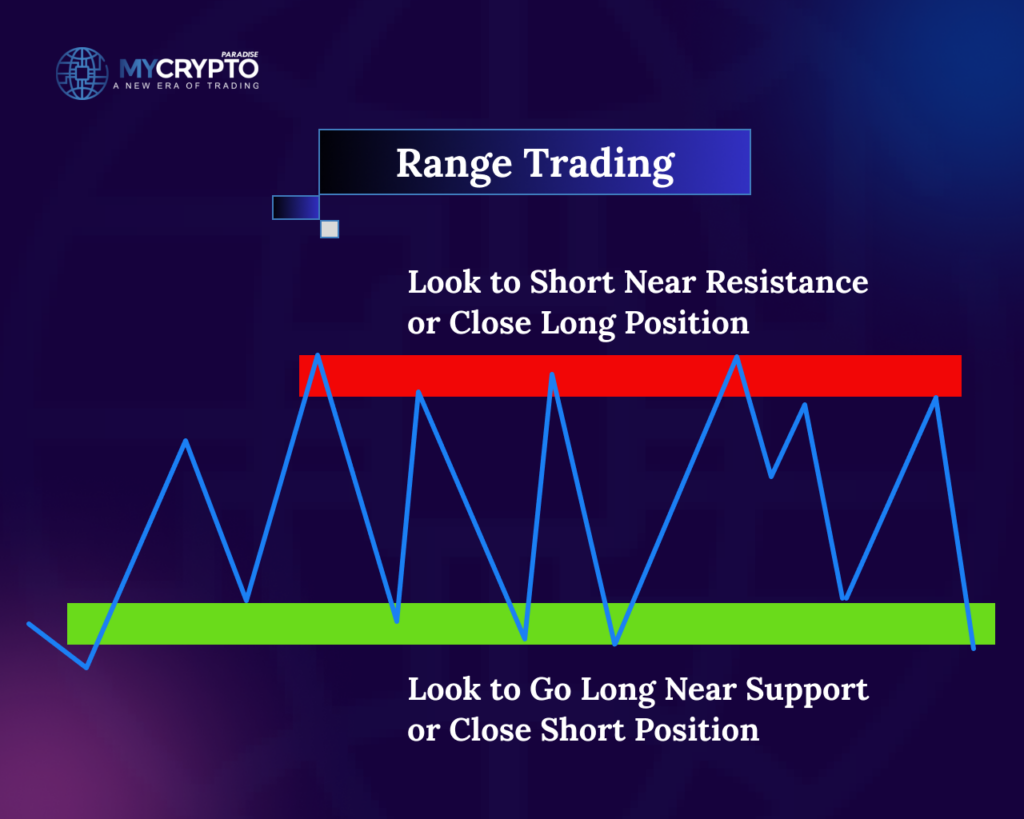
Distribution patterns in crypto trading refer to the way in which buying and selling activities are distributed across different price levels. By analyzing these patterns, traders can gain insights into market sentiment, identify potential trends, and make informed trading decisions. This article explores the concept of distribution patterns in crypto trading, various types of distributions, strategies to interpret them, and their implications for traders.
Types of Distribution Patterns in Crypto Trading

Normal Distribution
A normal distribution pattern, also known as a bell curve, occurs when the majority of trading activity is concentrated around the average price level. In such cases, the market is considered stable, with relatively balanced buying and selling pressure. Normal distribution patterns suggest that the market is in equilibrium, and traders may expect limited price fluctuations.
Skewed Distribution
Skewed distribution patterns arise when there is an imbalance between buying and selling pressure in the market. This imbalance can result in either a positive skew (skewed to the right) or a negative skew (skewed to the left). Positive skew indicates a higher concentration of buying activity, potentially leading to price increases. Conversely, negative skew suggests a higher concentration of selling activity, potentially leading to price decreases.
Bimodal Distribution
Bimodal distribution patterns occur when there are two distinct peaks of trading activity in the market. This indicates the presence of two groups of traders with different trading strategies or sentiments. Bimodal distributions may suggest periods of uncertainty or conflicting market views. Traders should closely monitor such patterns as they could potentially indicate upcoming price reversals or significant market shifts.
Strategies to Interpret Distribution Patterns

Volume Analysis
Volume analysis is a key tool for interpreting distribution patterns. Traders can examine trading volume at different price levels to identify areas of high or low liquidity. Higher volume at specific price levels suggests increased buying or selling interest, indicating potential support or resistance levels. By analyzing volume alongside distribution patterns, traders can confirm or challenge their trading assumptions.
Support and Resistance Levels
Distribution patterns can help identify significant support and resistance levels. Support levels are price levels where buying pressure is expected to be strong enough to prevent further price declines. Resistance levels, on the other hand, are price levels where selling pressure is expected to outweigh buying pressure, preventing further price increases. By identifying these levels within distribution patterns, traders can plan their entry and exit points.
Breakout Strategies
Breakout strategies capitalize on significant price movements that occur when the market breaks out of a distribution pattern. Traders monitor consolidation phases characterized by narrow price ranges within distribution patterns. Once the price breaks above or below these ranges, it may indicate a strong buying or selling pressure, leading to potential profitable trading opportunities.
Implications of Distribution Patterns in Crypto Trading
1. Trend Identification:
Distribution patterns can provide insights into market trends. By examining the shape and characteristics of distribution patterns over time, traders can identify the prevailing market sentiment—whether it’s bullish, bearish, or ranging. This information helps traders align their trading strategies with the overall market direction, increasing the probability of successful trades.
2. Risk Management:
Distribution patterns assist traders in managing risk by providing information about potential price levels where buying or selling pressure may intensify. This knowledge allows traders to set appropriate stop-loss orders to limit losses or take-profit orders to secure profits. Understanding distribution patterns can also help traders gauge the risk-reward ratio for specific trading opportunities.
3. Market Sentiment Analysis:
Distribution patterns reflect the collective actions and sentiments of market participants. By analyzing these patterns, traders can gauge market sentiment, such as greed, fear, or indecision. This understanding is valuable for contrarian traders looking to take positions against prevailing market sentiment or for trend-following traders seeking confirmation of their trading decisions.
Common Indicators Used to Analyze Distribution Patterns
Traders utilize various indicators and tools to analyze distribution patterns in crypto trading. These tools help them gain insights into market dynamics, identify potential trends, and make informed trading decisions. Here are some common indicators and tools used by traders:
1. Volume Profile: Volume profile is a graphical representation of trading volume at different price levels over a specific period. It provides valuable information about areas of high or low liquidity within a distribution pattern. Traders analyze volume profiles to identify price levels where significant buying or selling pressure exists, helping them determine support and resistance levels.
2. Moving Averages: Moving averages (MAs) are widely used indicators that smooth out price data over a specific period. Traders often use exponential moving averages (EMAs) or simple moving averages (SMAs) to identify trends and potential reversals within distribution patterns. By comparing the current price to different moving averages, traders can gauge the market’s overall direction and spot potential entry or exit points.
3. Bollinger Bands: Bollinger Bands consist of a central moving average line and two outer bands that represent the standard deviation of price movements. These bands help traders identify periods of price consolidation within distribution patterns. When the price reaches the outer bands, it may indicate potential overbought or oversold conditions, suggesting a potential price reversal or breakout.
4. Relative Strength Index (RSI): The RSI is a momentum oscillator that measures the speed and change of price movements. Traders use the RSI to determine overbought or oversold conditions within a distribution pattern. When the RSI reaches extreme levels (e.g., above 70 or below 30), it may indicate a potential reversal or correction in price.
5. Moving Average Convergence Divergence (MACD): The MACD is a popular trend-following indicator that consists of two lines—the MACD line and the signal line. Traders analyze the MACD crossover and divergence to identify potential trend reversals or confirm the strength of an ongoing trend. When the MACD line crosses above the signal line, it may indicate a bullish signal, while a crossover below the signal line may indicate a bearish signal.
6. Fibonacci Retracement: Fibonacci retracement levels are horizontal lines drawn on a price chart based on Fibonacci ratios. Traders use these retracement levels to identify potential support and resistance levels within a distribution pattern. Common Fibonacci retracement levels include 38.2%, 50%, and 61.8%, which are considered key areas where price reversals or bounces may occur.
7. Candlestick Patterns: Candlestick patterns provide visual representations of price movements and market sentiment. Traders analyze various candlestick patterns, such as doji, hammer, engulfing patterns, and more, within distribution patterns. These patterns can indicate potential trend reversals, continuation patterns, or periods of indecision in the market.
8. Market Depth and Order Book: Traders often examine the market depth and order book to assess the supply and demand dynamics within a distribution pattern. By analyzing the buy and sell orders at different price levels, traders can identify areas of congestion, potential breakouts, or significant support and resistance levels.
It is worth noting that no single indicator or tool can provide a definitive prediction of market movements. Traders often use a combination of these tools and indicators, along with their experience and market knowledge, to analyze distribution patterns and make trading decisions. Additionally, it is essential to consider risk management techniques and use proper position sizing to mitigate potential losses.
Conclusion
Distribution patterns in crypto trading provide valuable insights into market sentiment, trend identification, and risk management. By analyzing these patterns, traders can make informed decisions, identify potential support and resistance levels, and develop effective trading strategies.
The knowledge you’ve acquired in this article is a fantastic foundation, but to turn it into long-term profitability, you need to pair it with proven trading strategies and well-established tactics. Technical skills alone won’t carry you through the market over the next few years, but when combined with the right approach, they’ll give you a competitive edge.
At ParadiseFamilyVIP, we integrate expert technical analysis, on-chain insights, sentiment analysis, and an understanding of whale psychology with battle-tested trading strategies. This combination ensures that we’re consistently delivering profitable crypto signals and managing portfolios for sustained success.
We’re fully transparent, sharing all of our trades—including entry and exit points, as well as portfolio allocations—so you can mirror our trades and achieve similar returns.
If you want to see how we trade and elevate your skills, joining our exclusive PRO circle is the best way to get started. But keep in mind that membership is limited. If the circle is full, make sure to join the waiting list.
Our premium service is designed for traders with sufficient capital. For those still building their funds, we suggest starting with our FREE Telegram channels first.
Check if ParadiseFamilyVIP memberships are available here: https://mycryptoparadise.com/paradisefamilyvip/
We trade on four trusted exchanges, and we’ve secured up to 35% discounts on fees and deposit bonuses for our members. These exchanges meet our strict security standards, and we trust them with our own funds. We share these exclusive links with you for free 💙🌴
MEXC: https://www.mexc.com/landings/MyCryptoParadise?handleDefaultLocale=keep&inviteCode=1nqGL
BINGX: https://bingx.com/en/act/chanelActivityStyle3/PCF833J1/
KCEX: https://www.kcex.com/register?inviteCode=MYCRYPTOPARADISE
BITUNIX: https://www.bitunix.com/register?vipCode=3q22
Additionally, BITUNIX and KCEX are fully legal and licensed in the USA ✅💰







